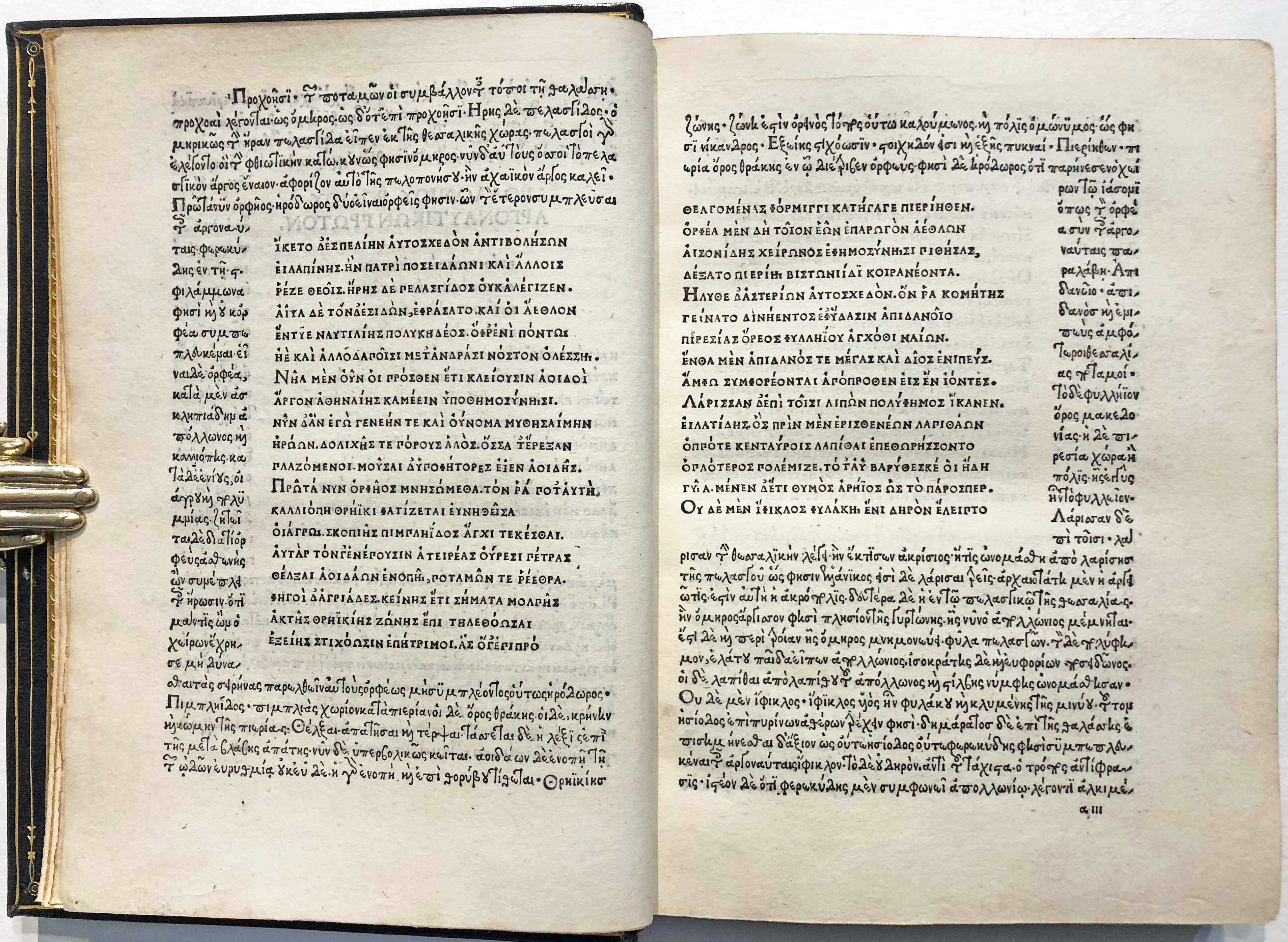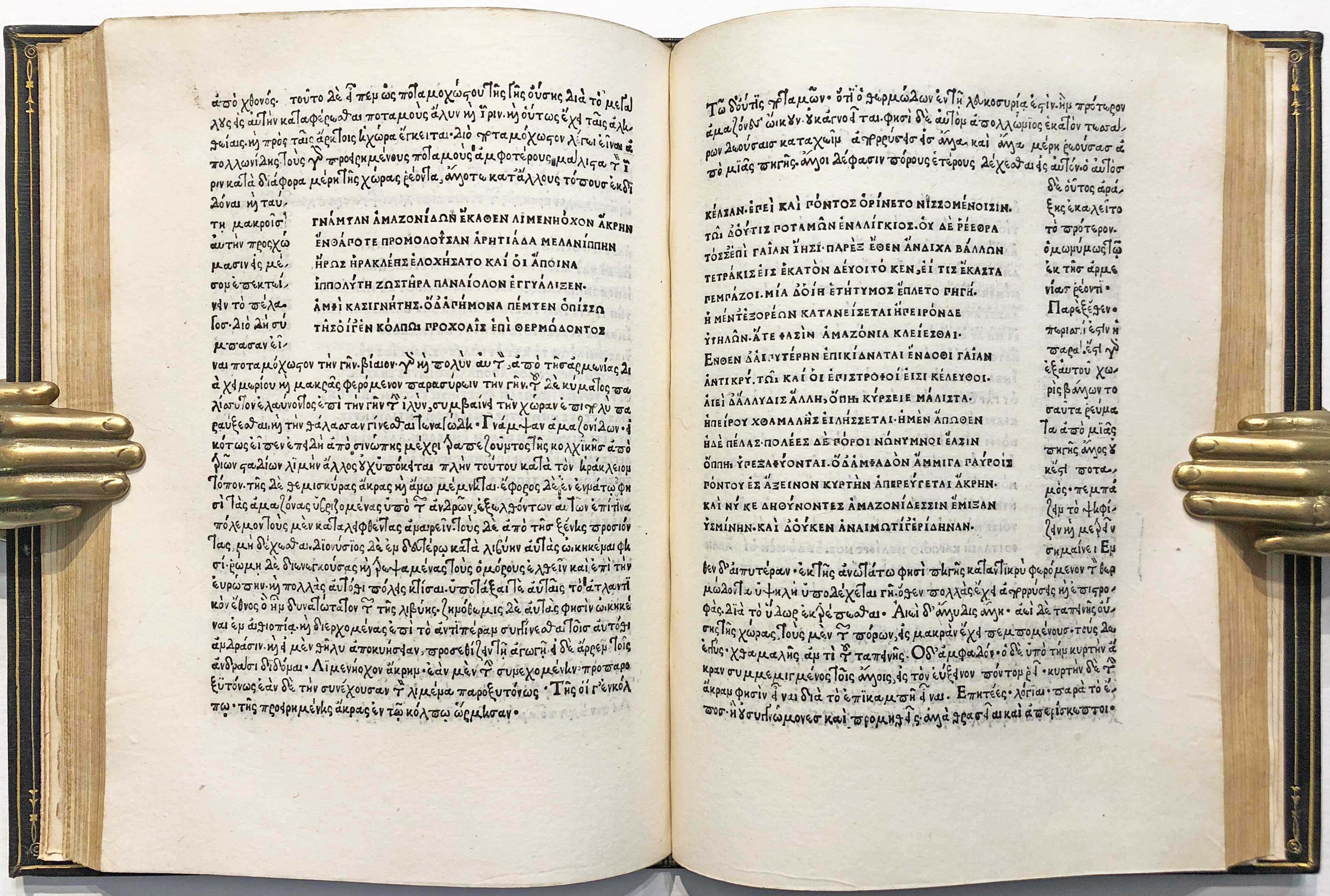incunabula
Table of Contents
Incunabula (sg. incunabulum) are the books printed before the year 1500. Since they try to emulate manuscripts, they show all sorts of adaptations made by the early printers in order to make the books acceptable to their potential buyers. That means lots of skeuomorphism (σκευο-μορφισμóς? ‘with the objects form’; wpskeuomorph), which I like.
1. in Greek
On Twitter, @incunabula posted many moons ago some gorgeous images which I save here shamelessly. I have saved them at full resolution, so check them closely.
The editio princeps of Apollonius Rhodius' Argonautica, printed in Florence in 1496 at the most important Greek press before Aldus. The fonts used were custom-designed based on epigraphic models by the noted Greek scholar Janus-Lascaris.


It seems it is the same edition which was sold at Christie’s, and if so, here is the whole description, for me to chase the editor, later:
APOLLONIUS RHODIUS (c.295-c.215 B.C.). Argonautica, in Greek. With the scholia of Lucillus of Tarrha, Sophokleios and Theon of Alexandria (1st century a.d.). Edited by Janus Lascaris (1445-1535). Florence: [Laurentius Francisci de Alopa], 1496.
At the same thread someone mentions a font/typeface named Lascaris, which now is yet another thing for me to want. Oh माया, endless इच्छा.
2. Printers
- Nicolas Jenson
- Johannes de Spira / Johann de Speyer
3. links
- Glasgow Incunabula Project
https://www.gla.ac.uk/myglasgow/incunabula/ - The Incunabula Forum
https://www.incunabulaforum.com - Information Studies 603: Incunabula Project Guide: Part 1: Physical Characteristics of Incunabula
https://guides.library.uwm.edu/c.php?g=595055&p=4116865 - Incunabula Short Title Catalogue. The Incunabula Short Title
Catalogue is the international database of 15th-century European
printing created by the British Library with contributions from
institutions worldwide.
https://data.cerl.org/istc/ic00322000
